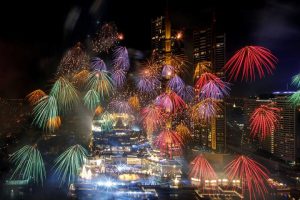Why Jump to Mark VII and Skip Mark VI?
Slowly but surely, quality began improving, Luxury Condo – bangkok.thaibounty.com – as did sales. The XJ6 thus had a much more sparkling reputation by 1985, and Jaguar built 38,500 of them in what would be the model’s last full production year (versus only 14,500 in 1980). Along the way, the state-owned company returned to the private sector; invested heavily in design and manufacturing for its all-important new XJ40 sedan, committed funds for future models, and even managed to buy a research and development center in Coventry abandoned by troubled Peugeot-Talbot. By the mid-Eighties, the Series III had set five consecutive yearly sales records in the U.S. It was little different from the slow-seller of 1979, but a better value than vaunted German rivals thanks to much lower prices and that tighter workmanship. Once Americans got the message, sales boomed.
The final evolution was the Mk IX, announced in 1959 with a newly bored out 3.8-liter engine of 220 horsepower, plus all-disc brakes (replacing drums), and standard power steering. Again by Jaguar standards, series production was impressive: a total of 47,190 over a dozen years. Its XK sports cars were consistent sellers throughout the Fifties, helped by numerous competition successes at places like Le Mans, where Jaguar won the 24 Hours in 1951 with the C-Type and in 1955, 1956, and again in 1957 with the aerodynamic D-Type. Jaguar’s Mark X sedan came at a time when the company was going from strength to strength in other areas, too.
But the Mark VII had unmistakable British style that Jaguar wisely played up in advertising. Of course, the lack of automatic transmission was a handicap in America, but Jaguar corrected it in a few years by offering a three-speed Borg-Warner unit at extra cost, along with optional Laycock de Normanville electric overdrive for the standard four-speed manual gearbox. Value for money was another asset: initially $3,573 (at contemporary exchange rates), quite reasonable for a car with genuine leather seat facings and real tree-wood on instrument panel and door cappings.
At its first showing, he asked for guesses about the price; most in attendance thought it should cost at least £625. In fact, he’d priced it at a sensationally low £385. The following year brought a similar ohv conversion of the 3.5-liter Standard six as a new option, massaged by Westlake and Heynes up to 125 horsepower. Armrests and pockets were added to the rear doors, and illumination was provided for the standard, comprehensive toolkit on the underside of the trunklid. Jaguar’s been raising eyebrows this way ever since. In 1937, the sedan received front vent wings, mechanically driven windshield wipers, and a small cubbyhole at each end of a rearranged French-walnut dashboard.
One British magazine was quick to name it “the world’s best sedan,” though that kind of nationalistic flag-waving is, perhaps, to be expected. Both the U.S. and European versions had proven faster than the old XJ6 4.2, and could be significantly more economical when driven with restraint. Nevertheless, the consensus in both Europe and America seemed to be that XJ40 was even quieter than the popular Series III; rode just as well, if not better; possessed as much flexibility and grace; and had even better steering and handling.
This model and a smaller-displacement companion sold surprisingly well for a new British make in the Depression, prompting the firm to expand a great deal and, in 1934, to change its name again, this time to SS Cars, Ltd. He also recruited a talented engine designer, Harry Westlake. Lyons thought that the fruits of his firm’s labors deserved a special identity and, after considering a list of animal names, came up with the SS-Jaguar badge, which appeared that year on a handsome new sporting sedan. Lyons took another step forward in 1935 by hiring William Heynes, a successful suspension engineer from the Rootes Group, to run the SS design department.


